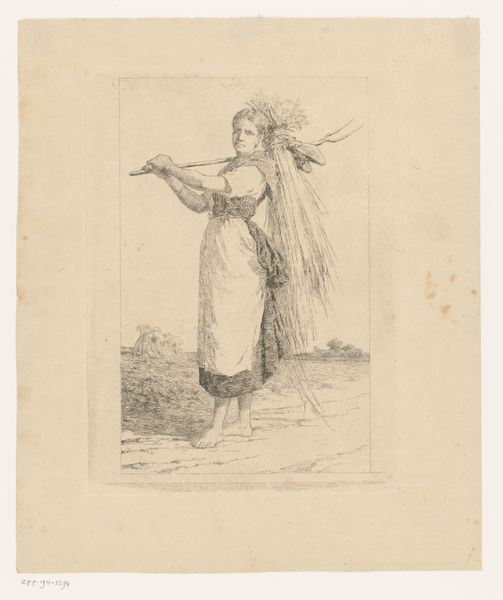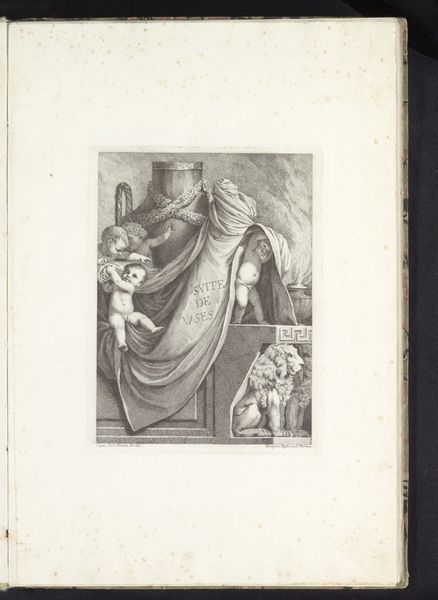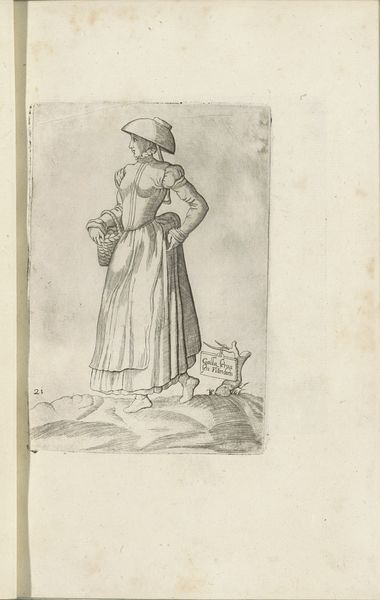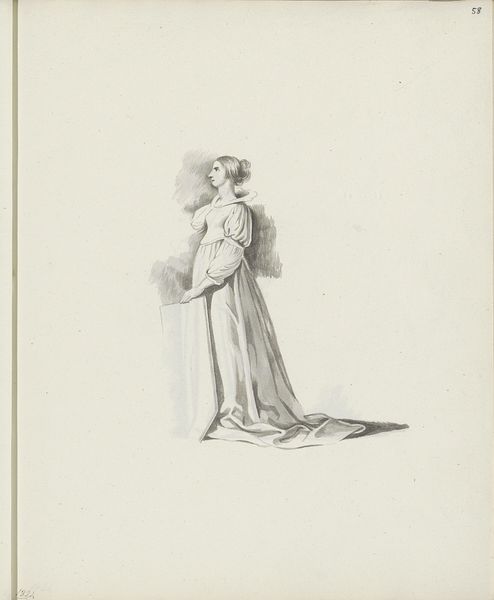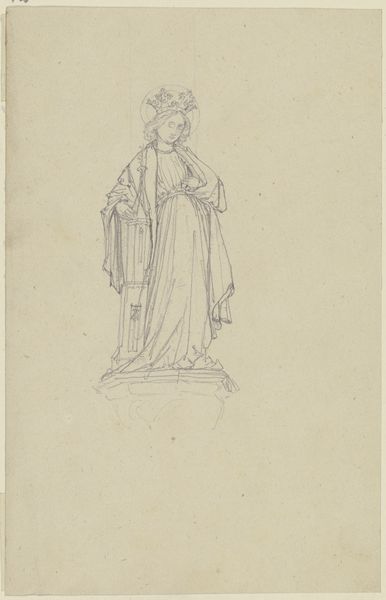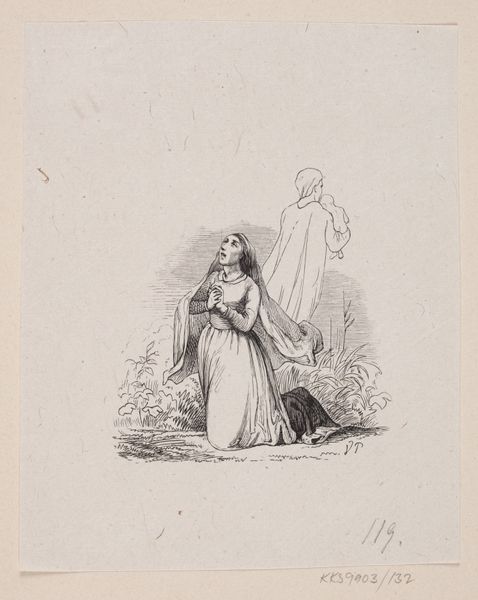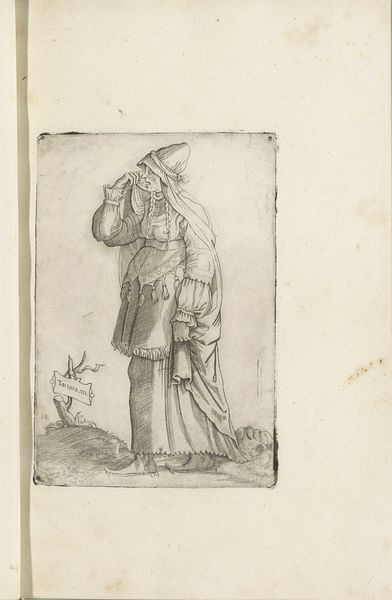
drawing, paper, ink
#
portrait
#
drawing
#
figuration
#
paper
#
11_renaissance
#
ink
#
line
#
northern-renaissance
Dimensions: height 265 mm, width 195 mm, height 150 mm, width 105 mm
Copyright: Rijks Museum: Open Domain
Curator: Immediately, what strikes me about this drawing is the almost stoic stillness, despite her hair flowing wildly as if caught in an invisible gale. Editor: That's perceptive. Let me introduce "Vrouw uit Zwitserland", or "Woman from Switzerland," a drawing rendered in ink on paper dating back to 1569. It resides here at the Rijksmuseum, and we attribute it to Fernando Bertelli. Curator: Switzerland! Ah, now that sign beside her makes sense! Did they pose her outdoors, do you think? The landscape feels quite symbolic and staged rather than taken from life. Editor: It's Northern Renaissance through and through; a dance between the real and the allegorical. The signboard does add an odd touch though. Typically, these small drawings of “landsknechts” or noblewomen would identify these regional “types”. She is standing upon the “confederation”. It seems, though, in this image, we can see it both literally and perhaps also in its burgeoning conceptual moment in this drawing! Curator: So she represents an entire territory... weighted with symbolism of nascent national identity. No wonder she appears so composed, even serene! Yet there is the contradiction in that wild hair--such a wonderful detail against that sense of containment from her headdress and severe gown. And the lines—crisp, elegant but somewhat cold as well? Editor: Cold is an interesting word for it... almost clinical, yes, in its detail and precision. I see a determined clarity instead. Bertelli's style embraces linearism that became prominent then, particularly evident in how he delineates the folds of her dress and the textures. Her gaze doesn't waver, doesn't invite intimacy; there is that stoicism again. I'd venture to suggest this "coldness" helps embody the idea of Helvetia as a region. Regions are always idealized constructs and projections. Curator: It does hint at her virtue… This is how nations were personified at this point! Though to modern eyes, those puffed sleeves appear ever so slightly absurd. The effect makes the woman, her character… abstract almost in their deliberate artificiality… But now I think, maybe they also underscore the inherent tension within the very idea of representing an entire people in a single image, don’t you think? Editor: Precisely. I’ve always loved images like these for freezing certain political moods and emotional economies for centuries afterward. They show us a collective idea taking shape… but with plenty of visual quirks in the process. Curator: Wonderful. Next artwork, please? I'm eager to uncover more buried stories.
Comments
No comments
Be the first to comment and join the conversation on the ultimate creative platform.
